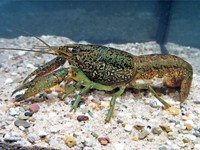Advertisement
Grab your lab coat. Let's get started
Welcome!
Welcome!
Create an account below to get 6 C&EN articles per month, receive newsletters and more - all free.
It seems this is your first time logging in online. Please enter the following information to continue.
As an ACS member you automatically get access to this site. All we need is few more details to create your reading experience.
Not you? Sign in with a different account.
Not you? Sign in with a different account.
ERROR 1
ERROR 1
ERROR 2
ERROR 2
ERROR 2
ERROR 2
ERROR 2
Password and Confirm password must match.
If you have an ACS member number, please enter it here so we can link this account to your membership. (optional)
ERROR 2
ACS values your privacy. By submitting your information, you are gaining access to C&EN and subscribing to our weekly newsletter. We use the information you provide to make your reading experience better, and we will never sell your data to third party members.
Environment
Newscripts
Scientists seek and save tiny aquatic critters
by Matt Blois
August 19, 2023
| A version of this story appeared in
Volume 101, Issue 27
The Grand Ole’ crayfish

After searching for crayfish in a creek outside Nashville, Tennessee, in May, the wildlife monitoring team from the Nashville Zoo celebrated with a plate of hot chicken.
“We found lots of crayfish,” says Chad Cogburn, the zoo’s lead aquatics keeper. “The team needs to be rewarded for all the hard work.”
There are more than 90 species of crayfish in Tennessee, but Cogburn and his team were trying to find one species in particular: the Nashville crayfish. This imperiled animal can be found only in Mill Creek, which dumps into the Cumberland River 6 km upstream from the city’s famed honky-tonks.
The Nashville crayfish was listed as an endangered species in 1986; in 2019, the US Fish and Wildlife Service (FWS) proposed removing those protections. Environmental groups opposed the change, arguing that the factors that got the Nashville crayfish on the list were still relevant. “It is a little animal, living in one little watershed, right next to a very big city,” attorneys representing several environmental groups wrote in a letter to the FWS objecting to the plan. The FWS still hasn’t made a final decision about whether it will remove the species.
For the past 9 years, a team from the zoo has been visiting sites along Mill Creek to monitor the Nashville crayfish population. At each stop, team members collect data about water and habitat quality. One person flips rocks where crayfish hide, while others scoop up everything underneath with fish nets.
“Then we continue scooping,” Cogburn tells Newscripts. “We don’t want any crayfish that were underneath this rock to get away.”
He hasn’t published his crayfish count results, which are conducted in partnership with the FWS. Environmental activists contend that the handful of population surveys cited by the service’s latest assessment of the species don’t provide enough data to support delisting it.
Cogburn has long been a part of the aquatic invertebrates fan club, but he says it’s sometimes hard to get others to care about mud-loving creatures in urban rivers. Crayfish may be less charismatic than jaguars, but Cogburn points out that they serve as an indicator of environmental health.
“We don’t want to be drinking bad water,” he says. “Without these guys in there, it’s a dead giveaway that something’s wrong.”
Mussel power

By 2008, the pale lilliput, a small freshwater mussel historically found in Tennessee and Alabama, was on the brink of extinction. A survey in Alabama that summer found the mussel in only a single stream.
The pale lilliput, listed as endangered in 1976, hadn’t been found in Tennessee since the 1980s. “We thought it was already gone,” says Dan Hua, a senior scientist with the Tennessee Wildlife Resource Agency.
Then, in 2015, a population was found in Lick Creek, 50 km southwest of Nashville, Tennessee. The next year, biologists collected a few pregnant mussels and took them to Hua’s lab, where she produced thousands of baby mussels.
Hua has since been breeding pale lilliput mussels in captivity and releasing them back into rivers across Tennessee. She says her goal is to rebuild the population so that the mussel can survive without help from biologists.
She’s slowly making progress, but according to a recent evaluation by the US Fish and Wildlife Service, Tennessee’s pale lilliput population is small and vulnerable to extinction. The pale lilliput is among 130 mussel species in Tennessee—a third of which are on the endangered species list, largely because of pollution and habitat loss, Hua says.
And those threats continue. In 2022, a local utility board proposed building a sewage treatment plant that would discharge treated effluent into Lick Creek. In June, 2023, the Tennessee Department of Environment and Conservation made a preliminary decision to deny a permit for the facility, offering the rare mussel some relief.
Meanwhile, Hua continues to do her part to protect the species. “It’s on the edge,” she tells Newscripts. “You could lose it if you don’t do anything.”
Please send comments and suggestions to newscripts@acs.org.







Join the conversation
Contact the reporter
Submit a Letter to the Editor for publication
Engage with us on Twitter